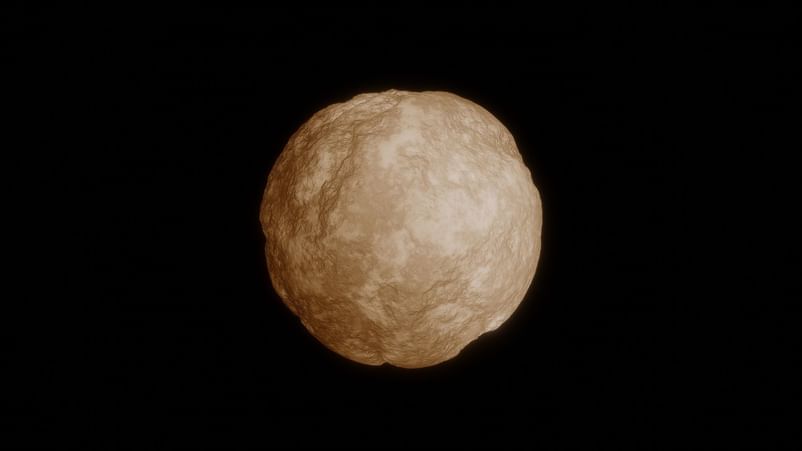Science
Scientists Utilize Mira Variable Stars to Measure Cosmic Expansion

Scientists have successfully employed 40 Mira variable stars to derive an independent measurement of the universe’s expansion rate. This groundbreaking work marks a significant advancement in astrophysics, as it aligns with findings from previous studies involving Cepheid variable stars.
Historically, until the late 20th century, experts anticipated that the universe would experience a rapid initial expansion following the Big Bang, which would then decelerate over time. However, in 1998, researchers made a pivotal discovery: the universe’s expansion rate is actually accelerating. This necessitates precise measurements of cosmic distances, comparable to estimating the distance to a city while flying in an aircraft at night.
Understanding Cosmic Distances
To navigate these vast distances, scientists utilize the cosmic distance ladder. This method relies on “standard candles,” which are astronomical objects with known luminosities. By measuring the brightness of these objects, researchers can determine cosmic distances and hence the rate of expansion. Commonly used standard candles include young stars with predictable luminosity variations and Type Ia supernovae.
A notable challenge in this field is the discrepancy known as the Hubble Tension. This issue arises from measurements of the cosmic microwave background (CMB), which suggest one expansion rate, while observations of standard candles indicate another. This inconsistency has prompted scientists to explore new methods of measurement.
Discovering the Potential of Mira Variables
Mira variable stars are older stars that exhibit periodic variations in luminosity, with the first such star discovered being Mira or Omicron Ceti. The study, led by Anupam Bharadwaj from the Inter-University Centre for Astronomy and Astrophysics (IUCAA), focuses on these stars to enhance the measurement of the Hubble Constant.
In this research, Bharadwaj and his team examined 40 oxygen-rich Mira variables located in 18 star clusters within the Milky Way. Their findings suggest that the new expansion rate aligns closely with the measurements obtained from Cepheid variable stars, providing strong evidence for new physics beyond the current standard model of cosmology.
The data has been published in The Astrophysical Journal. Bharadwaj noted, “We used Miras in our Galaxy as anchors for the first time to determine the most precise cosmic expansion rate based on these cool stars. This method allows a three-anchor baseline calibration of the extragalactic distance ladder with Miras in two external galaxies.” He further mentioned that the impact of metal abundance on Mira luminosity is significantly smaller than that of Cepheids, making them a promising alternative for determining the Hubble Constant.
The Hubble Constant is typically measured in kilometers per second per megaparsec. Current studies based on the CMB suggest a rate of approximately 67 km/s/Mpc, while those based on Cepheid variable stars indicate a value closer to 73 km/s/Mpc. The latest measurements from Mira variables fall in line with the latter figure.
Co-author of the study, Nobel laureate Adam Riess from the Space Telescope Science Institute (STScI) and Johns Hopkins University, emphasized the significance of the findings, stating, “The consistency between Cepheid and Mira anchored Hubble constant values further suggests the Hubble tension is unlikely due to measurement errors and points to a more fundamental cause including the possibility of new physics.”
Marina Rejkuba, an astronomer at the European Southern Observatory (ESO) and co-author of the study, expressed optimism about the research’s long-term impact, stating, “This study combines the fields of stellar astrophysics and cosmology. I would expect it to have a long-term impact as it ensures our understanding of the potential of Mira variable stars as a new well-calibrated anchor for the Hubble constant determination.”
This research not only enhances our understanding of cosmic expansion but also opens new avenues for exploring the fundamental nature of the universe. As scientists continue to investigate the implications of these findings, the role of Mira variable stars in cosmology is likely to expand significantly.
-

 World5 months ago
World5 months agoSBI Announces QIP Floor Price at ₹811.05 Per Share
-

 Lifestyle5 months ago
Lifestyle5 months agoCept Unveils ₹3.1 Crore Urban Mobility Plan for Sustainable Growth
-

 Science4 months ago
Science4 months agoNew Blood Group Discovered in South Indian Woman at Rotary Centre
-

 World5 months ago
World5 months agoTorrential Rains Cause Flash Flooding in New York and New Jersey
-

 Top Stories5 months ago
Top Stories5 months agoKonkani Cultural Organisation to Host Pearl Jubilee in Abu Dhabi
-

 Sports4 months ago
Sports4 months agoBroad Advocates for Bowling Change Ahead of Final Test Against India
-

 Science5 months ago
Science5 months agoNothing Headphone 1 Review: A Bold Contender in Audio Design
-

 Top Stories5 months ago
Top Stories5 months agoAir India Crash Investigation Highlights Boeing Fuel Switch Concerns
-

 Business5 months ago
Business5 months agoIndian Stock Market Rebounds: Sensex and Nifty Rise After Four-Day Decline
-

 Sports4 months ago
Sports4 months agoCristian Totti Retires at 19: Pressure of Fame Takes Toll
-

 Politics5 months ago
Politics5 months agoAbandoned Doberman Finds New Home After Journey to Prague
-

 Top Stories5 months ago
Top Stories5 months agoPatna Bank Manager Abhishek Varun Found Dead in Well









